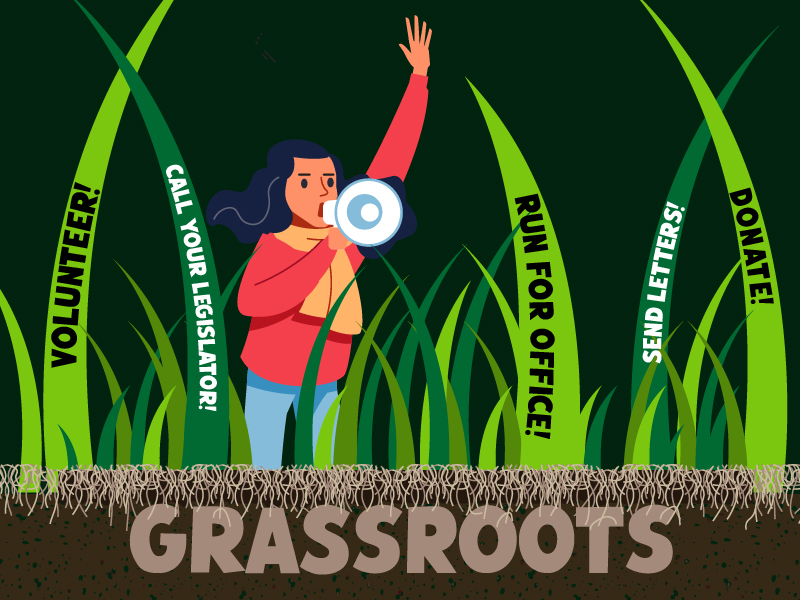
Top 15 Grassroots Actions to resist in the coming months and years.
With the elections behind us, there’s a lot of work to do. We need to take what we learned from last time and focus on growing grassroots actions for the upcoming years as we navigate a second Trump administration.
None of these tips are earth-shattering, but effective grassroots actions are built on consistent, day-in-and-out efforts that last long-term.
- Set aside time to talk with family members and friends who didn’t vote or voted for Trump to understand the reasons behind it.
- Call, email, Facebook message, and tweet your member of Congress about what is important to you. You can do this on a daily, weekly, or monthly basis.
- Call your local, state, or federal legislators and ask them to meet you for a cup of coffee. Developing a personal relationship with your legislator is an important part of accountability.
- Send handwritten letters to elected officials with a stamp is an underrated but effective grassroots action. Sending an actual letter is surprisingly effective. Add a phone number and ask for a callback.
- Send your letter to a local newspaper if you are worried that you won't get a response. Make the letter public and push it out via traditional and social media.
- Call or email your legislator and get them on the record supporting good legislation at the state and local levels.
- Run for office! We need to take back offices up and down the ballot. The only way to do that is by building a strong team at every level.
- Donate to organizations that will be affected by the Trump administration. Helping to fund the fight against these executive orders is important to organizations such as the ACLU, Planned Parenthood, the Southern Poverty Law Center, local immigration organizations, and many others.
- Buy a newspaper or subscribe to unbiased news outlets to help make sure good journalism continues to exist.
- Read what the opposition is saying in their own words, so you produce informed responses.
- Join a community group or a local Democratic Party organization to get involved.
- Volunteer for a nonprofit.
- Make sure your friends and family are registered to vote. This administration is going to try and purge voter rolls state by state, so double-check (triple-check, if needed) that everyone is registered at the correct address.
- Get trained to run for office or become an effective advocacy leader. If you want to learn more about advocacy strategy and tactics, check out this blog post.
- Don't get discouraged. This is the tough part, but we must stick together and continue fighting for progressive ideals.
Want to learn more about advocacy and ready to take the next step? Check out our Virtual Advocacy Training on April 3–4!